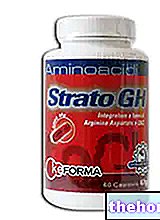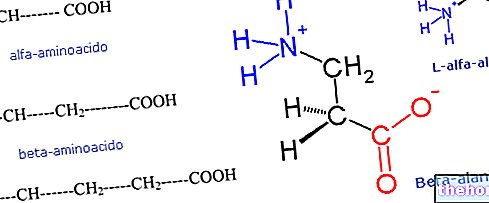Generality
Glucosamine is an amino monosaccharide naturally present in the human organism, where it represents a constitutional element of biologically valuable molecules, such as glycoproteins, glycosaminoglycans, hyaluronic acid and heparan-sulfate.

Extracted from the exoskeleton of small marine crustaceans, glucosamine is now available on the market in the form of supplements intended to maintain joint health, especially in the course of inflammatory diseases such as osteoarthritis.
Indications
Why is glucosamine used? What is it for?
Although glucosamine has been used for several years in the management of joint pathologies, in particular osteoarthritis, its mechanism of action has not yet been fully characterized.
If on the one hand glucosamine is part of the formation of glycosaminoglycans (macromolecules able to stabilize, both mechanically and functionally, the extracellular matrix), on the other it seems to carry out also a contextual, albeit modest, anti-inflammatory activity.
Both of these activities would play a key role in safeguarding the functionality of the joint.
More precisely, they would contribute, as observed in some studies, both to the synthesis of aggrecans and to the maintenance of the appropriate quantity of synovial fluid.
All this would reduce the risk of unpleasant friction damaging the bone heads involved in the joint, preserving its integrity with positive implications in the prevention and treatment of arthrosis processes.
Properties and Effectiveness
What benefits has glucosamine shown during the studies?
Having overcome the initial skepticism of experts in the field, regarding the real biological and clinical potential of the substance, several clinical trials have underlined the usefulness of glucosamine for joint health.
In these studies, the use of glucosamine, alone or in combination with chondroitin, would have resulted in:
- A reduction in joint pain in patients with osteoarthritis;
- A reduction in joint inflammatory processes in patients with osteoarthritis;
- A general improvement in the mobility of the joint affected by the inflammatory process;
- An appreciable histological improvement;
- A slowdown in the progression of osteoarthritis, reported by radiographic evidence;
- A reduction in anti-inflammatory drugs used for the management of the underlying disease.
Despite the interesting evidence listed, obtained from the rereading of numerous clinical trials with thousands of patients enrolled, other authors would instead keep their distance from these results, emphasizing the importance of drug therapy and the usefulness of supplementation with glucosamine as an adjuvant.
Dosage and method of use
How to use glucosamine
The daily dosage of glucosamine, currently recommended, is 1,500 mg, divided into at least 3 intakes.
Currently it is possible to find on the market supplements of:
- Glucosamine hydrochloride with an 83% glucosamine yield;
- Glucosamine sulfate with a glucosamine yield of 65%;
- N-Acetyl Glucosamine with a Glucosamine yield of 75%.
Regardless of the form of glucosamine used, the posology does not undergo noteworthy changes.
Side effects
Adverse reactions observed following the use of glucosamine were generally of a modest clinical magnitude.
Heartburn, abdominal discomfort and diarrhea were the most frequently observed side effects.
The incidence of allergic reactions was very rare.
Contraindications
When should glucosamine not be used?
The use of glucosamine is contraindicated in case of hypersensitivity to the active ingredient or to the products from which it is extracted (shellfish allergy).
Pharmacological interactions
What drugs or foods can modify the effect of glucosamine?
Having described the ability of glucosamine to induce insulin resistance, it would be advisable for patients undergoing hypoglycemic drug therapy to evaluate with their doctor the adequacy of the therapy and the possible need to correct the dosages.
Precautions for use
What do you need to know before taking glucosamine?
Given the absence of studies on the safety profile of glucosamine taken during pregnancy and lactation, it is not recommended for use in these stages of life.
In light of some noteworthy experimental evidence, the use of glucosamine is contraindicated in case of type 2 diabetes or metabolic syndrome.









.jpg)


















